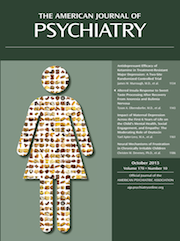Altered Insula Response to Sweet Taste Processing After Recovery From Anorexia and Bulimia Nervosa
Abstract
Objective
Recent studies suggest that altered function of higher-order appetitive neural circuitry may contribute to restricted eating in anorexia nervosa and overeating in bulimia nervosa. This study used sweet tastes to interrogate gustatory neurocircuitry involving the anterior insula and related regions that modulate sensory-interoceptive-reward signals in response to palatable foods.
Method
Participants who had recovered from anorexia nervosa and bulimia nervosa were studied to avoid confounding effects of altered nutritional state. Functional MRI measured brain response to repeated tastes of sucrose and sucralose to disentangle neural processing of caloric and noncaloric sweet tastes. Whole-brain functional analysis was constrained to anatomical regions of interest.
Results
Relative to matched comparison women (N=14), women recovered from anorexia nervosa (N=14) had significantly diminished and women recovered from bulimia nervosa (N=14) had significantly elevated hemodynamic response to tastes of sucrose in the right anterior insula. Anterior insula response to sucrose compared with sucralose was exaggerated in the recovered group (lower in women recovered from anorexia nervosa and higher in women recovered from bulimia nervosa).
Conclusions
The anterior insula integrates sensory reward aspects of taste in the service of nutritional homeostasis. One possibility is that restricted eating and weight loss occur in anorexia nervosa because of a failure to accurately recognize hunger signals, whereas overeating in bulimia nervosa could represent an exaggerated perception of hunger signals. This response may reflect the altered calibration of signals related to sweet taste and the caloric content of food and may offer a pathway to novel and more effective treatments.



